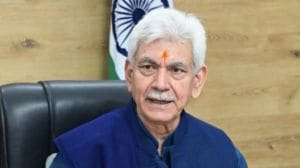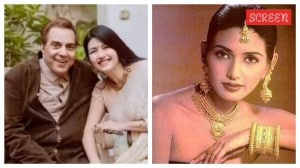A Prince Come to Music
The journey of SD Burman,from a Tripura royal family to the hearts of music lovers.
Book: SD Burman:The World of His Music
Author: Khagesh Dev Burman
Publisher: Rupa
Price: Rs 295
Pages: 312
SD Burman: The World of His Music by Khagesh Dev Burman is a translation from the original Bangla. This is a lovingly detailed work about the maestros musical journey from a remote state in the Northeast,to the hearts of millions of Indians. The author has drawn on numerous sources,including SDs autobiography,eyewitnesses and people close to the maestro,as well as his colleagues and rivals. He has combined them with his own observations,both musical and personal,to make this a work worth reading.
The book details how a person from the royal family of Tripura battled all odds to achieve the kind of success that finally became his. The erstwhile royal family did not take kindly to his decision to pursue music rather than take on the mantle of administrative duties. True,Tripura was it still is a place where music of various genres flourished. Sachin karta,as the maestro is respectfully called in his native state,combined the musical influences of the courtly khayal and thumri which were heard in the palace,with the richness of the folk songs of Tripura and East Bengal now Bangladesh where he spent much of his childhood. Music was in his blood,true. But it was not an easy path that he chose.
A prince of the realm,he would mix with the boatmen and farmers and soak in their haunting melodies. Sachin kartas love of the land mingled with his musical genius to give his work that uniqueness which unmistakably marked each of his creations. Assimilating these various influences,his own unique creativity produced sparkling gems for both Bangla and Hindi film music for decades.
The book is peppered with interesting anecdotes,about the man and his music. His meticulousness,his perfectionism and his ability to deliver are all detailed here. This is,however,no hagiography,for his failures and his discouragements are also shown. The maestros musical journey from the complexities of the classical style to the simplicity that was demanded if a film song were to be a hit is explained. Sachin kartas simple delight in hearing his song on a peasants lips is movingly detailed. He perfected the difficult art of being nuanced,layered,while keeping the basic melody catchy and simple,so that even his cook could hum it.
SD delivered hit after hit from the Thirties to the Seventies in the Bombay film industry and the Bengali musical sphere,with no hint of burnout or fatigue. From early songs such as Tadbeer se bigdi hui taqdeer bana le (Baazi,1951) to Phoolon ke rang se (Prem Pujari,1970) which came much later,the journey was incredibly varied,with each song fresh in its melodiousness and imagination. The author seeks to reveal some of the behind-the-scenes workings that went to shape these hits. They make for engrossing reading.
The book also details his relationships with various singers,how he brought in fresh new voices and used each singer impartially,according to the needs of the actors and the demands of the cinematic situation. He also fused Western music if the situation demanded it. His own haunting voice was sometimes unforgettably backgrounded in the films,though he knew that its unique pitch and timbre were not suited to those who would be lip-synching to them. The compositions that he sang in many films are still treasured. There are also some interesting vignettes of how his son,RD Burman,grew as a composer,and SDs musical relationship with RD.
The book has a very valuable list of songs that he put to music,in chronological order both Bangla and Hindi songs,film and non-film and the numerous awards that were showered on him. This record will surely be of great interest to both scholars of music,as well as innumerable music lovers who count themselves as SD Burmans admirers.
It is always very difficult to pin down,and analyse,through the medium of the written word,the evanescent beauty of music. Words falter and fail before the evocative and emotive loveliness of the aural. To his credit,the author has tried to examine,through technical scrutiny,how some of Sachin kartas best songs were put together,to work their magic on the heartstrings of listeners across the country. He has analysed the way SD threw his voice,the way certain words and syllables were lengthened or accented,and much more,to produce the desired effect. Of course,the emotive quality of that amazingly timbred and hauntingly textured voice cannot be pinned down. Yet these technical details help get an understanding of SD Burmans musicality,his style and his methods.
The translation,by the author himself in collaboration with SK Ray Chaudhuri,is competent. It flows easily,and avoids the pitfalls that books of this kind are prone to. It is something a layperson can read,without being tripped up by jargon. This is indeed a book that lovers of film and folk music,as well as the countless fans of SD himself,would love to own.
Mitra Phukan is an author and translator






- 01
- 02
- 03
- 04
- 05

























